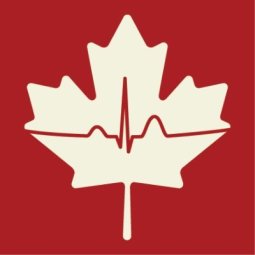Law MR, Daw JR, Cheng L, Morgan SG. Growth in private payments for health care by Canadian households. Health Policy. 2013, in press. http://dx.doi.org/10.1016/j.healthpol.2013.01.014
Background
The Canada Health Act (CHA), passed in 1984, requires that in exchange for federal funding, provinces and territories provide medically necessary hospital and physician care “free” at the point of service. Through “first dollar coverage”, the CHA aims to ensure that care is equitably delivered based on need, rather than ability to pay.
The CHA has led to the provision of publicly-funded hospital and physician services across the country, but with limited coverage for prescription drugs, and for services such as physiotherapy, dentistry, optometry, post-acute care, and long term care.
As a consequence, Canadians have high out-of-pocket spending for some health care services not covered under the CHA, exceeded only by private spending in the United States and Switzerland.
The authors of this study investigated household spending for six types of health care services in Canada.
Methods and limitations
The authors analyzed data from the Statistics Canada annual survey of household spending for 1998-2009, comprising 163,081 responses. The survey provided data on total household spending and after-tax income, plus direct out-of-pocket health care spending (including copayments and deductibles) for the following categories: dental care; eye care; physician care; other health care practitioners; hospitals and nursing homes; prescription medications; private health insurance premiums.
The researchers analyzed data for absolute spending, growth in spending, and proportion of “high-burden households” spending more than 10% annually of their after-tax income on health care. They used a logistic regression model to examine variables associated with high-burden household status. Spending was analyzed by province, but because of small numbers of respondents, Saskatchewan and Manitoba were analyzed en bloc, as were the four Atlantic provinces. All figures were inflation-adjusted and presented in 2009 dollars.
Potential sources of bias include self-reporting and recall bias, however, Statistics Canada is rigorous in its verification protocol, and any bias would have remained constant across years. The response rate to the survey each year ranged from 63% to 76%, which may also have introduced a bias as non-responders may have differed from responders, and no data were available to characterize non-responders.
Findings and analysis
Average Canadian household spending on health services increased from $1112 in 1998 to $1523 in 2009. This represented a 37.0% overall increase in spending, and a mean growth rate of 2.9% per year over inflation.
The largest category of household out-of-pocket spending was private health insurance premiums (average $452 per household), followed by dental (average $373 per household), and prescription drugs (average $320 per household). The average is naturally lowered by inclusion of households with zero spending in a particular category.
Among households with non-zero outlays in a given category, (i.e. at least some positive spending) the single largest mean expenditure was private insurance premiums at $1175 per household, followed by hospitals and nursing homes at $941 per household. Among these same households, 65% spent on prescription drugs; 54% on eye care, 49% on dental, 39% on private insurance premiums, and 21% on non-physician practitioners. Only 6% spent on physicians, and 2% on hospitals and nursing homes.
Importantly, the largest average annual growth rate between 1998 and 2009 occurred in hospitals and nursing homes (8.0%), physicians (5.3%), non-physician practitioners (3.9%), and private insurance premiums (3.9%).
Whereas in 1998 only 3.3% of households spent 10% of after-tax income on health care, in 2009, 5.2% of households met the threshold for high-burden spending. The number of households spending 25% of after-tax income on health care more than doubled to 0.7% during the same interval. The probability of having high-burden health expenditures was greatest in households with at least one senior family member (OR = 2.0); and in households in B.C. (OR = 1.76), the Atlantic Provinces (OR = 1.29), Saskatchewan and Manitoba (OR = 1.16), and Quebec (OR = 1.14), (all relative to Ontario OR=1.0).
Comment
Despite the enduring belief among Canadians that health care services should be universally available, regardless of ability to pay, out-of-pocket and total health care spending has been increasing in Canada.
Most increases in private out-of-pocket health care spending have occurred in areas not protected under the Canada Health Act, and therefore subject to market forces, namely private health insurance, dentistry, and prescription drugs.
As governments debate changes to policies affecting health care financing and delivery, it is important to consider the threats these changes pose to equitable access to care, and, therefore, health outcomes. This study suggests that to ensure equitable access to health care, governments should seriously consider bringing some services not currently included under the CHA into the Medicare basket. Furthermore, any consideration of direct patient charges for hospital and physician services currently protected under the CHA requires an understanding of the context highlighted herein - namely, that direct spending on health care by Canadian families is already very high, and growing.
